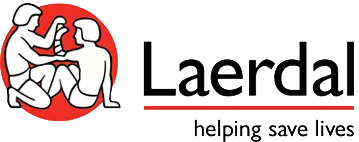


Medical solutions provider Laerdal wanted to unify several key business processes in a single environment, including financial consolidation, managerial reporting, project budgeting, and commercial forecasting. The company chose the Board Intelligent Planning Platform to enable this transformational effort, resulting in increased automation in the finance function and greater process control.
Laerdal Medical is dedicated to helping save lives by developing products, programs, and services to improve resuscitation, emergency care, patient safety, and global health. The company serves the needs of healthcare providers and educators with products and services for Basic and Advanced Life Support, Simulation, Airway Management, Immobilization, Patient Care, Self-directed Learning, and Medical Education.
Laerdal has dedicated the last 60 years to vital medical research and has big ambitions to make a huge impact on society, with the goal of saving 500,000 more lives every year.
The Laerdal group is focused on three business areas: patient care, resuscitation, and a non-profit organization called Laerdal Global Health which takes care of people living in low resource income countries.
Board Financial Consolidation 4.0
19 currencies
16 nodes
96 reporting units
285 cost centers
229 product groups
Managerial reporting
Project budgeting & reporting
Sales, Marketing & Services forecasting
Laerdal’s existing financial reporting system was too cumbersome and rigid to keep pace with the growth of the organization. Identifying this problem, the management team decided the legacy software should be replaced with a modern IT platform that would support the business in achieving its ambitious goals.
Laerdal was looking for a transformative solution capable of unifying different processes in a single environment – from analytics to planning, reporting, and forecasting. This had to be achieved across 33 legal entities, 96 business units, 16 branches with no ERP system (only CSV-based solutions), and a plethora of data sources including Oracle Sibel, Salesforce, Cornerstone, and Dell Boomi applications.
Robin Wittmeyer, Project Manager at Laerdal, explains the selection process:
There was lots of extra stuff we needed to do so we did one vendor round focused around two key criteria. The solution had to be a best-in-class product and it had to be a cloud platform, which is why we selected Board.
The unification of processes at Laerdal was broken down into four key project areas:
Robin continues by explaining how, with Board, Laerdal has been able to integrate processes and data across the organization to create a single point of truth:
Now we're in much better shape. We have the financial figures to support our business. We have the KPIs presented to management. The project managers can use the system to drill down and see where costs are coming from. They can go so far that they can actually pick up the invoice itself and bring it up. So, it's a huge improvement. But we would have never changed our master data unless we had seen the transparency that Board gave us to start with.
As Lars Christiansen, Finance Systems Implementation Manager at Laerdal, highlights, all financial data coming from the different databases is reconciled in the Board Financial Consolidation environment:
What’s important to see here is that we have the reconciliation database. And that means that all the data is reconciled here, so that we are absolutely sure that the consolidated financial statement reporting, statutory reporting, and managerial reporting are aligned. We have a decentralized loading process, meaning that all the users load data themselves and they follow our process and validate data themselves. Therefore, at the end, when we validate every month, we validate 33 legal entities in Board.
The financial consolidation process is fully automated with Board Financial Consolidation, as Lars continues:
We automatically consolidate 96 reporting units, 16 nodes, 19 currencies, 285 cost centers, and 229 product groups. In the managerial reporting, this workflow is automatically executed every night.
In Laerdal, as in any other company, the financial dimension is not separated from the operational one. Thanks to Board Intelligent Planning Platform's capabilities, Laerdal can generate internal reports to better understand the performance and financial impact of manufacturing, supply chain, and the external sales activities, as Lars continues:
Every day when we come to work, we enter Board and we have the latest data from yesterday, already within this workflow.
In budgeting and reporting processes, users follow the different steps that they need to execute and end up with a budget summary. Similarly, with the sales, marketing, and services forecast figures, people follow a process-driven approach which ends up in a forecast summary. Lars concludes:
We have simultaneous data entry from 33 countries, scenario simulation, multicurrency data entry, auditability, and a validation workflow. Board makes it possible to create a unique data layer where information is translated in each business unit according to the real needs of the decision-makers.
00:00:15Laerdal has dedicated the last 60 years to helping save lives and we have big ambitions to make a huge impact on society. So, our goal is to save 500,000 more lives every year.
00:00:30Two years ago, we decided to go for Board. One of the key criteria was that it should be best in class and it should be cloud.
00:00:37We had four projects that we wanted implement. We had Board Financial Consolidation, which was to deliver financial statements to the board and to the authorities. We had Managerial Reporting, which was to deliver financial reporting to our internals, as in managers and keeping KPIs. We have Project Budgeting and Reporting, which was to provide the project managers, such as myself, with finance on our project on how we're doing. And we also had a Project Sales, Marketing, and Service Forecast, which was, for them, to be able to put in their sales forecast and to provide information for our supply chain to be able to deliver on those forecasts.
00:01:23Laerdal was looking for a new financial consolidation, reporting and forecasting tool. The goal for the project was to automize as much of the processes as possible, so that the users can spend their time in analyzing and understanding the data that is presented. We also wanted to bring in more information, more dimension to make analysis better.
00:01:46What is important to see here is that we have the reconciliation database and that means that all the data is reconciled here, so that we are absolutely sure that the BFC, the statutory, and managerial reporting is aligned. When we validate every month, we validate 33 legal entities in Board. Then we look at the BFC and managerial.
00:02:15So in BFC, we followed the built-in process that's already there. We consolidate 96 reporting units, 16 nodes, 19 currencies, 285 cost centers, and 229 product groups. So then, we take a look at the project budgeting and sales marketing. The project budgeting and reporting is a step-by-step process that's been built. Here, the users follow the different processes that they are told to do, and they end up with a budget summary. And again, with the forecast figures, you see that we follow a given step-by-step process, which ends up in the forecast summary.
00:03:00Then we have the sales, marketing, and service forecasts. Here again, same idea. Follow a step-by-step process to enter in data and, as you see here, we have simultaneous data entry from 33 countries. Scenario, simulation, multi currency data entry, audit ability and validation workflow.
00:03:24So now we're in much better shape. We have the financial figures to support our business. We have the KPIs presented to management. The project managers can use the systems to drill down and see where are my costs coming from. They can go so far that they can actually pick up the invoice itself and bring it up. So it's a huge improvement.
00:03:42But, we would have never, ever changed our master data unless we had seen the transparency that Board gave us to start.